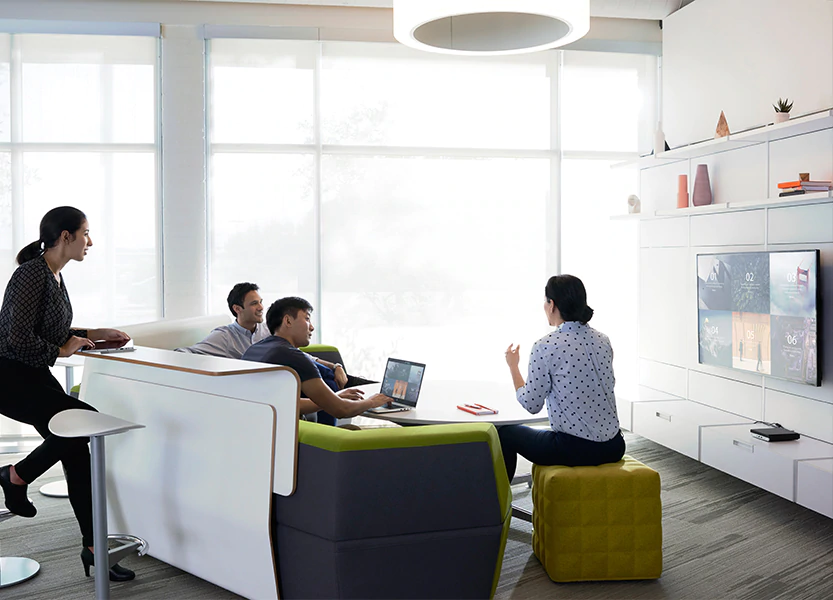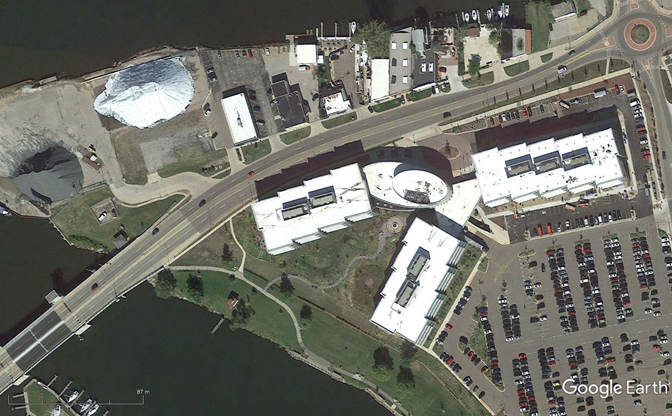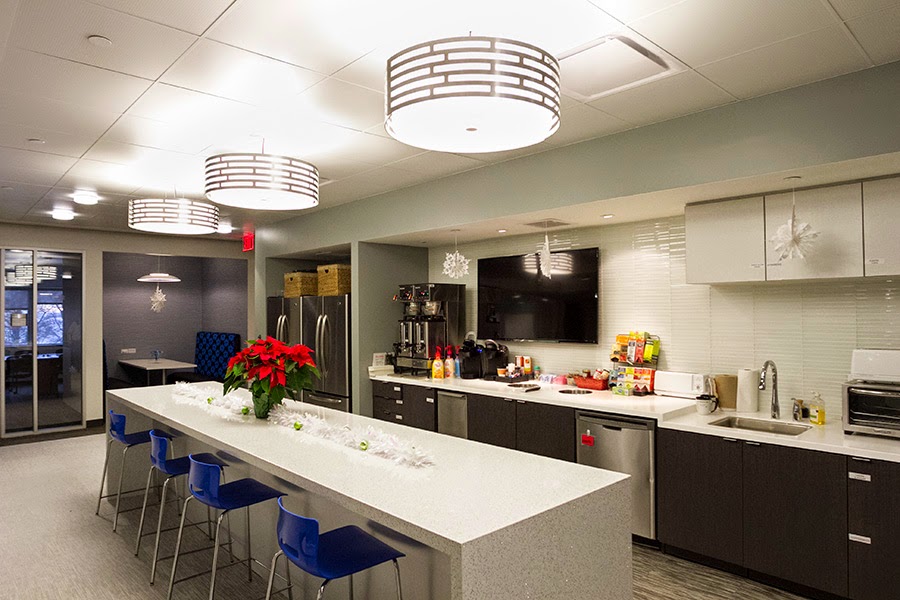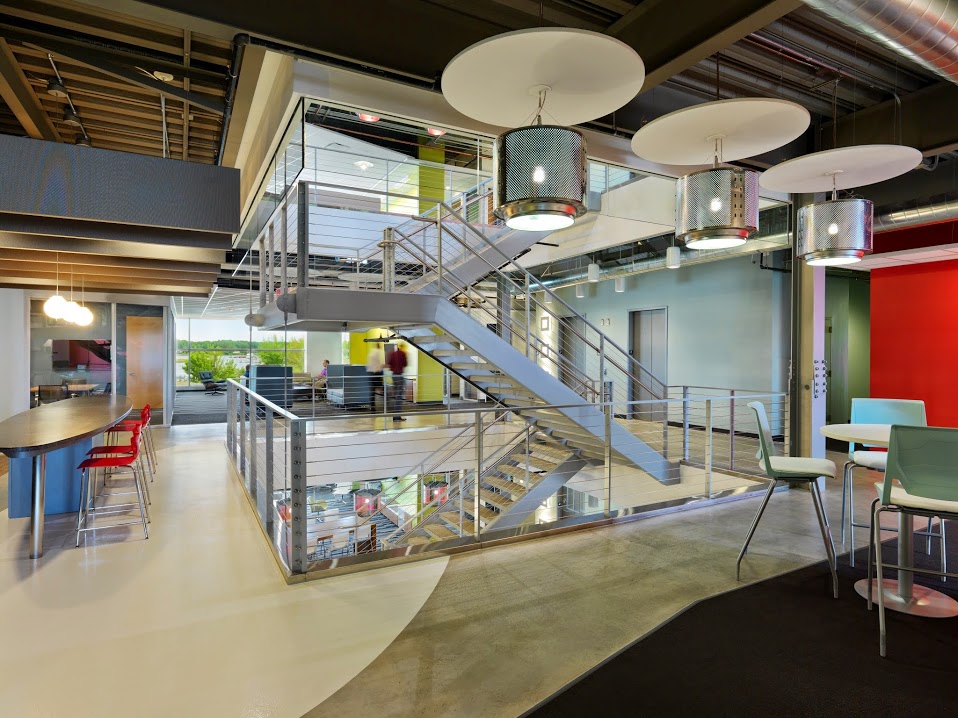
The Secret to High Energy Innovation Spaces
May 15, 2019 | Anthony Mills
Innovation Spaces – which can refer to any space intentionally designed to foster and facilitate good innovation work – come in all sorts, shapes, and sizes. Perhaps the most commonly understood of these is the ubiquitous Innovation Lab. However aside from formal "labs" per se, Innovation Spaces can also be incorporated in many ways into other, more comprehensive spaces, so long as they meet certain criteria that is important to innovation work. Examples of this range widely – from large open collaboration spaces to R&D Labs to Advanced Design Studios – each facilitating some important aspect of the overall innovation work needing to be done. And while there are some who question the value of Innovation Labs and other dedicated Innovation Spaces, the real issue is not the lab or space itself (though a poor design can in fact fail an organization), but rather how the organization is using these labs and spaces. If they are merely using them as a staging ground for Innovation Theater in order to impress their customers, then in the long they are wasting their time and money – and frustrating their workers (which will ultimately backfire on them). But if they are genuinely using these labs and spaces to advance really good innovation work – and let's be clear... there are many organizations who are in fact doing just that – then these labs and spaces can be a really great investment for the organization. This is true whether they are being used to pursue a top-down Innovation Strategy by an Advanced Innovation Group, or to pursue individuals' and teams' own bottom-up innovation ideas from within the general workforce – or both.
Understanding this then, organizations desiring to provide really good Innovation Labs and other, more general Innovation Spaces need an understanding of what it takes to make a really good, engaging, and high-energy innovation environment. For several years now I have designed Innovation Spaces for clients all over the world, and I can tell you that there are a number of extremely important design considerations that have to be taken into account. But today I want to touch on just one of those considerations, namely how we infuse a sense of "energy" and "buzz" into these spaces.
While what actually goes on inside the space is of course very important, infusing this sense of "energy" actually begins long before we ever do anything in the space, with the design of the space itself. Specifically, there are three important elements that go into fostering this sense of high energy in the space, namely site selection, natural light, and the virtual presence of the outside world. Note that all three of these are things that originate from outside the space, and so we should really think of these spaces as "sponges", trying as they might to soak up energy from the outside and channel and concentrate that energy into this space in order to create an inherent ambiance of energy therein. The space then becomes an incredibly fruitful starting point so that when people are actually doing things inside the space and thereby adding their own creative energy to it, the overall effect is a real sense of high energy and buzz. I will next explain each of these three elements in greater detail.
Site Selection
This is the first and most critical consideration of all. Basically, if we want our space to be one of high energy, then we need to locate it in a place that is itself already teeming and buzzing with energy... places where people are actively coming and going and doing enjoyable things and interacting with one another. We commonly find this in city centers and downtown areas where there are lots of people mulling about, numerous cafés and coffee shops to engage at, and perhaps street entertainers adding their energy as well. Or perhaps near train and subway stations located adjacent to a large city park, where again many people are coming and going as well as engaging with each other in the park... basically anywhere there is this type and level of energy. What we want to avoid, in contrast, are "dead zones", as so many industrial parks and suburban enclaves tend to be. In those places, there is very little apparent human activity going on, and so by comparison they feel very dead... there is no external energy for our space to soak up and absorb. Thus those types of places do not make for good environments if our goal is to achieve a high energy innovation environment inside our own space.
The icing on the cake to all of this is when we can also have an inspiring view from our innovation space, perhaps of a garden or nearby river or city scene. I had the good fortune once of being able to locate an Innovation Lab for a government agency in a high energy sector of Dubai while simultaneously placing it right along Dubai Creek, with a splendid view overlooking this waterway. When we have such an option, I try to orient the front of the building toward the source of energy, and the back of the building toward the most inspiring view, often with a private balcony overlooking it (excellent for spending time in personal introspection), and a private patio with pathways leading out into and along the scenic feature (great for those long walks where we can really ponder and turn over in our heads the innovation challenges we are working on – yes, long walks are very important for good innovation work). Metaphorically, one can think of this building orientation as "inhaling" along the front and "exhaling" along the back. The front brings in energy; the back permits introspection – a controlled use of that energy.
The caveat often raised to all of this is the matter of whether we are instituting a space that is so far away from our main offices that our workers cannot conveniently use it for their own bottom-up innovation work and the Advanced Innovation Groups located in it are totally out of touch with the rest of the organization, and therefore unable to transfer their innovation know-how and methods into the organization. This is a very valid concern, and so I always strive to balance this issue with the need for the high energy environment, looking for a high energy environment that is as close as possible to the main offices. The ideal – and this does happen from time to time – is for the main offices to themselves be located inside of a high energy environment. In those cases, the challenge is usually easy to address, often having the innovation space next door to, or a part of, the main offices. It is those situations where the main offices are located within dead zones that we really have to work hard to try to keep the two places feeling connected to one another. But we do try as best as we can.
Natural Light
This one is already well known and not anything new. We need large, wide open, expansive windows — with of course tinting and UV treatments that are appropriate for the location, and also so as to have the privacy we need so that the general public is not being exposed to what may otherwise be confidential endeavors. This lets in a significant amount of natural light, which – especially when combined with large open spaces having high ceilings, and perhaps augmented with greenery – tends to create a sense of "life" within the space. That in and of itself is extremely important for letting our space soak up life energy.
But now remember that we also have located our space inside of a high energy external environment, and so now we are able to see not only the skies and clouds above us, but also all of this human activity going on about us. As a consequence we can "feel" the energy associated with that activity. And so it is this combination of large, wide open, expansive windows with this high energy external environment that lets our space – not unlike a sponge – soak up a maximum amount of outside energy. That is far more powerful than either of these elements taken alone.
Virtual Presence of the Outside World
Finally, we bring into our space yet a third source of outside energy, this one in the form of a virtual representation. Specifically what we are referring to here is the placement – in several very key, important locations throughout the space – of large flat-screen televisions on the wall piping in 24-hour news programming. These can be used anywhere we have a relatively large, open collaboration space, with perhaps their most poignant placement being in common eating areas (kitchen and dining areas), as really good collaboration and community tend to happen whenever people are breaking bread together.
When Whirlpool Corporation built its relatively new Riverview Campus (shown in the images below, courtesy of Whirlpool Corporation), they designed it with three wings, each having a central hub (repeated on all four levels) containing a café-like open eating space with a bar facing the kitchen wall, on which is hung a flat-screen television broadcasting 24-hour news programming from around the world. Behind the bar are several booths, high tables, and lounge furniture at which people can gather to collaborate, as well as a stairwell connecting the floors to one another. Surrounding them are conference rooms and open spaces having large expansive windows, in part looking out over the waterways leading into Lake Michigan, in part looking over toward the Art District of Benton Harbor. These central hubs force lots of different people to run into each other, while providing a great food-oriented collaboration space filled with this energy from the outside world.



What these televisions and their news programming do for us is really two-fold. First, they inherently bring into our space yet another stream of energy from the outside world, this one in the form of world news... important world events happening all around us. Second, and even more importantly, they make us (those using the space) feel connected to this outside world. So in reality there is actually energy flowing both ways between us and this outside world. Why this is so important to innovation work is that in innovation work – especially the more breakthrough, disruptive, and transformative types of innovation work – we inherently want to feel like what we are doing is going to be something that will change the world and make it a better place. And so what being connected with the outside world in this form does for us is that it in fact helps to inspire us and the work we are doing (even if subconsciously), so that in the end there is a greater sense of purpose, passion, and urgency in what we are pursuing. This can be profoundly important when truly trying to find new breakthroughs that hold the potential to, in fact, change the world. Being connected to the world via world news drives us forward in that pursuit. So, ultimately, we can think of this particular energy stream – because it brings with it useful, relevant, timely, and meaningful information – as the most inspiring of the three sources of energy.
The Triumvirate
When we bring together all three of these – a high-energy external environment, large open expansive windows, and 24-hour world news programming – we achieve the triumvirate of outside energy, letting our space soak up, sponge-like, all of this energy and channel it back into our own innovation work. This results in a truly engaging and high energy innovation environment, one that perhaps has the greatest potential for producing significantly impactful innovations for the world.
What's Next?
The next important consideration, now that we have all of this energy in our space and we inherently have innovation work going on there, is "How do we channel the flow of this energy throughout the facility so as to optimally support a process flow that we want this innovation work to follow?" There are indeed ways for doing that, but they too require careful thought and consideration. This is a topic for another time.
Also, beyond the question of infusing energy into our space, there is also the allied question of how we infuse life into our space. That comes through the elements of light, greenery, art, and historical artifacts (and in certain instances, music) – all very important elements for connecting us to the solid and the abstract, as well as to the past and the future. This too is a topic for another time.
Anthony Mills is a Master Innovation Space Designer who intimately understands the feng shui of really great Innovation Spaces. He knows how to design these spaces to achieve an optimal balance and flow of both activity and energy so as to induce within them a corresponding process flow for an organization's innovation work.
To learn more, refer to our Engagement Page, or drop us a line here... Contact Page.





